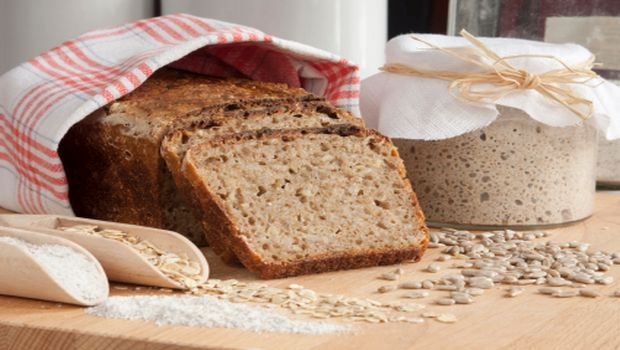Good news for diabetics who must limit bread intake due to its high glycemic index. Food scientists from the National University of Singapore (NUS) found incorporating anthocyanins into bread resulted in a bread that can be digested at a slower rate, improving blood glucose, according to a new study published in the journal Food Chemistry.

Good news for diabetics who must limit bread intake due to its high glycemic index. Food scientists from the National University of Singapore (NUS) found incorporating anthocyanins into bread resulted in a bread that can be digested at a slower rate, improving blood glucose, according to a new study published in the journal Food Chemistry.
Most breads contain a high amount of rapidly digestible starch and many have a high glycemic index. Foods high on the glycemic index are rapidly digested and absorbed into the bloodstream quickly, causing a sharp increase in blood sugar levels and making them unsuitable for diabetic patients. Excessive consumption of bread could increase the risk of overweight and obesity, and their associated diseases, such as Type 2 diabetes. The findings open up new possibilities of creating healthier, diabetic-friendly food products.
Current approaches for developing health-promoting bread are dominated by adding whole grains and fibers in bread, partly aiming to slow down its digestion among several health benefits. The researchers said reducing the digestion rate of the bread will lead to a lower glycemic index and slower absorption of the bread’s carbohydrates. This usually suggests a lower insulin demand, and could potentially improve long-term blood glucose control.
Researchers found that digestion rates of the anthocyanin-fortified bread were reduced by 12.8 percent when 1 percent of anthocyanin extract from black rice was added into the bread dough and baked at the optimal condition of 200°C for 8 minutes. The digestion rate dropped further to 20.5 percent when the amount of anthocyanin extract increased to 4 percent. However, at 4 percent the bread became dense and less elastic.
The researchers had previously conducted a study in 2014 to examine the degradation of anthocyanins during baking. They found that more than 80 percent of the antioxidant capacity was retained in the bread crust and crumb, even when baked at temperatures as high as 240°C for up to 12 minutes.
“Our results demonstrate that it is indeed feasible to create functional food products through anthocyanin fortification, using bread as an example. We hope to conduct further studies to incorporate anthocyanins into other food items, such as biscuits. Our team is also keen to explore opportunities to work with industry partners to introduce the anthocyanin-fortified bread to the market," the researchers wrote.
Check out the “Bread Fortification on the Rise" article to find out more about developing functional breads and download INSIDER’s free “Fortifying with Fiber" Digital Pulse to learn about the latest research supporting fiber ingredients, as well as advice on formulating functional foods, beverages and supplements with fiber.
About the Author(s)
You May Also Like






.png?width=800&auto=webp&quality=80&disable=upscale)